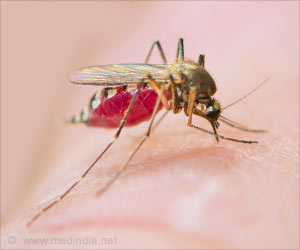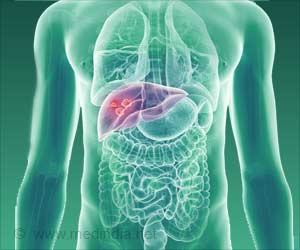
When you accidentally stub your toe or hit your head, you’re familiar with the instinct to rub the area for relief. But why does this work? Recent findings from the laboratory of Scott B. Hansen, Ph.D., illustrate how applying physical pressure on cells can diminish pain signals. Conversely, the research reveals that excessive cholesterol clusters in cell membranes may disrupt this pain-relief process.
The research, carried out at The Herbert Wertheim UF Scripps Institute for Biomedical Innovation & Technology, appears in the scientific journal eLife.
Hansen and his colleagues’ discoveries are important for several reasons. They show for the first time that cell membrane lipids, or fats, help send an electrical pulse into cells after experiencing pressure and force. The research illuminates the path that pain signals take from an injury site to the brain, and connects the many biological players involved.
“Excess cholesterol is a feature in many diseases and disorders, including diabetes and diseases of aging,” said Hansen, an associate professor of molecular medicine at The Wertheim UF Scripps Institute. “This could be one explanation for why we see more chronic pain in these groups.”
Did You Know?
New study demonstrates that an excess of cholesterol in cell membranes can impede pain control mechanisms.
The study also adds to mounting evidence that the fatty molecules that make up cell membranes require structure to perform their many duties, he added. “Originally, science thought only proteins had structures with function,” said Hansen. “It looks like the lipids can be added to that list.”
A cell is made of a fatty exterior membrane encasing a water-based interior. Advanced microscopes and other new technologies are revealing that the cell membrane isn’t simply a fatty sac, though. Rather, it’s a sophisticated collection of sensors, pores, channels, receptors and cholesterol clumps held in place by precisely arranged fat molecules.
“There are two types of fats in the membrane, one is fluid, like olive oil, and a second contains cholesterol and is found as tiny, rigid clumps, more like lard,” Hansen said. “It wasn’t known that those fats might play a role in pain signaling.”
Sensing Pain: Unraveling the Role of Lipid Structures
To feel pain, first, the injury must be sensed. Second, that injury message must convert to a signal that can travel rapidly through the body and be interpreted by the brain. The lipid structure appears to sense the force and convert it into a signal. The signal can then help activate the body’s own pain-relieving responses — so long as there’s no interference — lessening pain’s severity.
Advertisement
Scientists have previously documented the role of a mechanical force-sensing enzyme called PLD2 in these steps and its ability to activate a pain-relief providing potassium channel called TREK-1. Missing was an understanding of how PLD2 and TREK-1 could be activated by the membrane. PLD2 lacked the ability to sense tension, the typical way that mechanosensors are engaged. Membrane lipids weren’t considered, perhaps because they were poorly understood, due to technical limitations.
“Until recently, the study of these cholesterol-containing lipid clumps, also called lipid rafts, has been difficult, because they are too small to be seen by a regular light microscope,” Hansen said.
Advertisement
Using a special microscope, Hansen and colleagues documented in several cell types that pressure and stretching, or “shear,” caused changes to those fat molecules that temporarily altered the cell’s ability to activate pain relief. Studies in mice and fruit flies also underscored their findings.
The research raises interesting questions and opportunities for more study, Hansen said. Many proteins associate with these lipid structure, including the proteins involved in Alzheimer’s disease and inflammation.
“New types of non-opioid pain therapeutics are urgently needed for people who live with chronic pain,” Hansen said. “Understanding what factors set the threshold for pain is an important step toward that goal.”
Source-Eurekalert



